|
Image courtesy of Wizards of the Coast- My favorite summoned-demon-to-a-victorious-ravenous-war-band-of-gnolls is on the table this week! A Shoosuva is a hyena-demon gifted by Yeenoghu (the gnoll god) to an especially powerful Gnoll (typically a Fang). A Shoosuva manifests shortly after a Yeenoghu-centric war party achieves a great victory, emerging from a billowing, fetid cloud of smoke as it arrives from its "air dnd" in the Abyss. In battle, the Shoosuva clamps its jaws around one victim while striking out with the poisonous stinger on its tail to bring down another. A creature immobilized by the poison becomes easy pickings for the savage gnolls nearby. Each Shoosuva is bonded to a particular favored Gnoll of Yeenoghu and fights alongside its master. A gnoll that has been gifted with a shoosuva is second only to a Flind in status, and carries with them a sense of dread for any who oppose the approaching slaughter. Let's Go A Little DeeperShoosuvas have a history deeper than 5th Edition. With the prevalence of the gnoll in Dungeons and Dragons legacy, the Shoosuva went hand in hand, though their art has certainly evolved. An artist's example of the emaciated, nearly humanoid Shoosuva from 1st Edition Dungeons and Dragons. By 3rd Edition of Dungeons & Dragons, the Shoosuva are much more...furry. But I prefer its most recent rendition in 5th Edition. The patchwork fur, as if striated from a living corpse; the exposed rib cage, with light emanating from within, so when the thing opens its maw, the nauseating yellow glow from within pours out, the last thing a victim sees before it chomps down on their head. Leprous throats, glowing and bloated eyes, and vicious, jagged teeth...don't you just wanna' hug him? You'll have to stand on your tippy-toes - these good boys are 6 feet tall, with a series of bony spikes and ridges running up the spine, ending in a glistening, barbed tail with a poisonous stinger (which causes paralysis). Super fun. You want one of your own? Then you'd better stock up on spare carrion, as this thing's favorite food is rancid meat. Though you might be able to coax it with your wit and wiles, as, especially by gnoll standards, these things are pretty smart (Int 6-8), but not THAT smart. Getting a cleric on your side to turn or tame one might be a wasted effort, too. Though they look undead, their forms seemingly powered by that necrotic light within their torsos, their demonic lineage grants them the tell-tale resistances to such radiance, along with the standards of energy damage - most are resistant or immune to things like Lightning, Fire, Poison, and Cold, not-to-mention that ever-tricky "damage from non-magical weapons" deal. By the numbers, a Shoosuva is a hefty beast for most middle-level adventurers, and a deadly encounter for young parties. Thing is, they're rarely alone; fighting alongside a gnoll war band and, most likely, a seasoned gnoll warrior who's a cut above their fellows. Their demonic nature cuts most damage in half and you can kiss that charm spell goodbye. Their natural armor isn't amazing, but they make up for it with a boatload of hit points and an extra attack. Plus, they share the gnoll's iconic Rampage ability, so the moment the wizard goes down, you can bet he's coming for your cleric next. The thing to really watch out for is its Tail Stinger - it's got a 10-15 foot reach, rocking d8s in damage, and a nasty Constitution save or be PARALYZED (hits become crits, yo). Creatures can repeat the saving throw at the end of their turns, if they survive that long. How Much Is That Demon In The Window?Alighted in the face of battle, Shoosuva charge in with savagery and wild abandon, pulling in as many foes as possible to rend asunder. A Shoosuva fighting alongside their bonded Gnoll will coordinate dangerous and vicious tactics, alternating from riding and vaulting the wild Gnoll into foes, feinting with their poisonous tail while the Gnoll fells attackers immobilized by the venom. Nasty stuff. In a war band's hierarchy, a Shoosuva's companion answered only to a Flind, but even that could be usurped in the loose tribal nature of a Gnoll pack. If you were to summon a Shoosuva directly, without the chosen of Yeenoghu, a powerful shaman could acquire instructions on how to summon their hyenadon companion - some induce visions by gorging on bad mushrooms and wandering the wastes, while others keen on linguistics may yet uncover the sparse written tomes on slabs of rock in the deep, dark caves of precursor war bands. Often the ritual involves taking the skull of a previous shaman or witch doctor, carving it into the shape of a hyena skull, then smashing it onto the ground; if it's favorable, the current shaman may utter Yeenoghu's name, opening a gate to call the Shoosuva. But these fine puppies only hang around for an hour or until slain, and do not bond to any favored warrior. You could, of course, attempt to just ask Yeenoghu directly. Pray really hard, and maybe he'll port in a Shoosuva to hang out and solve a little problem you've been having. You could do that...though even the most faithful will get silence, or worse, they get a Shoosuva who promptly kills them for being unable to solve their own problems. If you are graced with a new puppy pal, the thing would only stay for minutes or even seconds; just long enough to maul a paladin or two, and then he's outsville. Shoosuva in Ionian LoreThe gods are tricky beasts, and Yeenoghu is one to involve himself in the lives of his followers through portents, visions, and signs. To his sovereign best, however, a Shoosuva was crafted as a personal bodyguard and intermediary to his favored warriors. Shoosuva in Gnoll translates directly as "returner", and were believed to be the reincarnations of Yeenoghu's greatest disciples; a glimpse of the honorable next step for his favored here in the material. Die in glorious battle and return one day in this new form to fight again.
As the tides of time passed and Asmodeus led his mythic Consolidation, Yeenoghu and his disciples fled a collapsing Abyss and held court among the stars. This disruption led to the ascension of another demigod to bless the Gnoll tribes...and free them from their fiendish hunger, a ripple that erupted across the magical bindings of a Shoosuva and their companions. Suddenly, a demon bound for life began a journey all their own. Would they wander the wastes of this new world? Find packs of their own, or evolve into something new? Only time (and games), will tell. See you at the table. -Adamus
0 Comments
The massive Girallon is something I have unleashed upon unsuspecting players, lumbering out of tundra caves and ruling over cursed, temperate forests. For those unfamiliar, a Girallon looks like an oversized ape with pale tan skin and white fur. Sharp fangs threaten from their bulbous heads, and vicious claws seek to rend. The most surprising element many will notice, however, are its two additional arms protruding from the torso, a feature that cements this as a dangerous monstrosity. Kings Of The Broken TowerThe giant white apes reside as the sentinels of warm forest environments teeming with life. Adept climbers, the Girallon only nests in trees or structures that can support its nearly half-ton weight. Ruined cities retaken by the forests of the world, shattered towers, and abandoned castles are the jungles they rule (and are the best "branches" to support them). Scaling battlements and walls, a Girallon will perch on tower tops and lookout hooks, anything to keep an eye on the surrounding landscape. When branches cannot abide, Girallons stalk the forest floor. They lurk in narrow ravines, under natural bridges, and in shallow caves. Despite their size, a Girallon can be quite stealthy while awaiting prey. Band Of BrothersHowever, Girallons rarely live alone. Forming loose bands of several individuals, including mates and offspring, led by an alpha elder, Girallons create conclaves deep within a lair. While on the hunt away from their band, they use roars and body language to communicate over great distances. While each individual typically hunts alone and far from the others, each successful kill is shared among the group, the best spoils going to the caregivers. The alpha leader may organize members to work together to make a big kill or defend the lair, and in both cases, a success is blanketed among the group. The Band and its survival always takes precedence. Seeing the peaceful nature among their own kind, other intelligent observers have sought to establish relationships or alliances with the creatures. Beings will learn how to approach their leader, and offer food or shiny gifts as appeasement, but every Band is different. It would take quite a scholar to learn the sophistication required to move from Band to Band, without angering rival groups. Less enlightened folk have tried to tame or subjugate the monsters. For instance, some crime lords will send wood elves to capture a young Girallon, training them up to serve as the guard to a city's thieves' guild. But care be to one that would keep a Girallon in bondage, for the creature could revert to its predatory nature at any moment. By The NumbersA Girallon is a Large Monstrosity without an alignment, but just because they're neutral doesn't mean they won't rip you limb from limb. With hit points ranging from upper 50s to low 90s, these guys will fight for the long haul at mid-level. They've got natural armor, so even your dagger wizard can hit them, but the real question is what happens after. FOUR ARMS. Count 'em, four! And each one gets an attack. Also, they bite. So that's five attacks each round, with Bonus Actions that allow extra movement. These guys move like monks, and they climb at the same speed (40-50 feet). When they hit, we're talking D6-D8 damage with a solid +4 Strength bonus. If you're fighting one of my Band Elders, double those dice and expect a +5 modifier. Despite their immense overwhelming attack economy, a decent party with even marginal balance will be fine in combat with one of these. However, if ever they find themselves on the unlucky end of a GROUP HUNT, this can get bad very quickly. Girallons In The Ionian WorldscapeThe original sage's lore for the Girallon paint them as so much more than gigantic apes. Their hereditary affinity for ancient ruins and their strange anatomical appearance lead many historians to believe that they were created or manufactured through magical means - a guardian for some lost empire long ago.
In my worlds and others, the Girallon lost this purpose whenever that civilization fell, turning feral and spreading out into the realms at large. However, tales of intelligent Girallon tribes have made their way into the bardic lores. These mythic monstrosities communicate through sophisticated sign language and evolved vocalizations, their own form of Beast Speech. Some bards even say a few can lurch their way through Common. More importantly, they have learned to use their superior strength and dexterity to industrialize - creating armor, weapons, and simple tools. If you're keen on a death wish, one can try to find them in the fog-covered continent of Vysoria, beyond the Great Expanse to the east from our central continent. A few have ventured there; wayward, plucky scholars with dreams of discovery glinting in their eyes. ...None have returned... Now go eat a banana. -Adamus The monsters of Dungeons and Dragons sometimes fall into the swirling cyclone of the diametric. Two sides of an arcane coin, unequivocally linked to one another. Some grow out of opposition, while others are twisted transformations of one - a dark miasma of spitting fire and screaming madness. With all my talk of pendulums swinging and balances shifting, my lens lingers on creatures of this influence. They are fascinating to consider - beyond our stats and alignments, to explore the STORY of their nature and what gives way in the imagination's gates when you do. The Purity Of The Pegasus The white winged horses known as Pegasi soar through moon-touched skies, a vision of grace and majesty. When glimpsed by mortals, they linger only for a moment, touching down for a drink from mountain springs or crystal lakes. Intelligent and vigilant, any sound or sign from the local wildlife will send them back into the safety of the clouds above. Born in dens of starlight in the realms of Arborea, the overwhelming positive good of a newborn Pegasus would spill out into the astral sky, alighting new stars and sending the nearby plants to bloom. An equine marvel hatched from an egg, a Pegasus embraces flight almost immediately, its feathered wings glinting with astral efflorescence. Pegasi nests are commonplace in Arborea, and the wondrous sentience of the creatures makes them loyal mounts to the Seldarine - the pantheon of Elven gods. Faster and calmer than any wyvern, a Pegasus must be persuaded to serve their rider, entering a partnership that can last millennia. The Seldarine will sometimes send Pegasi to the Material Realms to aid their followers or serve as messengers of their will, but depending on the forces in play, sending these faithful creatures has its own risks... The Twisted Amalgamate Of A NightmareA visage of hellish terror, a Nightmare often appears in a cloud of roiling smoke, its mane, tail, and hooves wreathed in fire. The creature's onyx form moves with a wraith's speed, vanishing into the night in a burst of brimstone. Though it can be ridden by the occasional antihero on a redemption kick, the Nightmare is a prime mount for creatures of exceptional evil. Demons, devils, death knights, and liches all call this fiendish horse a steed, and many more repugnant souls seek to claim their own by summoning one from the Lower Planes. Thing is, if you don't feed that hell horse a worthy sacrifice upon its arrival, it has no reason to stay loyal to you. A good many cultists have been burned to a crisp due to this small omission in the fine print. The Story Between The TwoThis is where things get interesting.
According to Dungeons & Dragons canon, a Nightmare isn't BORN, they are MADE. It takes a dark ritual involving the torturous removal of a Pegasus's wings, the more brutal the better. Literature is mixed, but the theme here is cruelty; the slower and more horrific the removal, the greater the Nightmare produced. And this isn't a bait and switch situation; the Nightmare IS that tortured Pegasus, driven insane by brutality and dark magic. t's sick. And I kind of love it. Because this relationship raises a few pathways that I want to consider: First, the inner circle of the Seldarine would be indirectly responsible for the creation of a Nightmare in most cases, as these dark rituals often take place at the hands of mortals - or those directly tied to them. To send a Pegasus as an avatar of the Seldarine opens them to possible capture through dark forces, perpetuating a dangerous silent war of astral attrition. How insane to fathom an Archfey riding into battle only to come face-to-face with their old trusty mount, twisted by darkness and brutality. Second, the Nightmare retains the intelligence of Pegasus form. This is no mindless beast bent to one's will, and though the rituals require sacrifice to link the mare to the rider, I would venture that a mental or verbal bargain is still required. In fact, I could see the maddening steps of a certain ritual play out deliciously - fool a Pegasus into believing it is making a heroic pact and companion, only for the creature's true nature to slowly twist the poor being into its Nightmare; like a frog slowly boiling in the pot. You're not breaking down a pet, you're convincing a sentient creature - this requires more nuance. I like to think that every Pegasus has a name, a personality; hopes, dreams, goals, not unlike a heroic PC. How does one twist and manipulate a hero into becoming a villain? If the Star Wars prequels taught us anything, it was how NOT to portray one's turn to the dark side (sudden is bad writing) - what if this process could be more insidious? Slow and manipulative, with a grand payoff. Finally, the monster lore stated that the more brutal the shift, the STRONGER the Nightmare. Which pulls me down the jackal hole. If you have a particularly twisted or prolonged "ritual", could you create a "greater" Nightmare? I'd imagine that Pegasi under the Seldarine would make names for themselves similar to their heroic riders. Perhaps the greater the renown, the harder the fall. Such a change might yield something along the lines of a Night Terror (or "Knight Terror"); the twisted mirror of a once great heroic steed. And if this is possible, could a Nightmare be redeemed? Perhaps its flight is never restored, but its good nature and starlit white coat, with blue fire for its crest, restored. What story could that creature tell? As I research, I leave you with one more idea through the ether. A Nightmare canonically can pass through the Ethereal Plane, carrying its rider and several others along for the journey. Imagine what it sees in the mist of the dead. Old soldiers failing to pass on? The spirits of lingering beasts and the wisps of old sages? Or do they see themselves...the Pegasus inside, a haunting specter of their past life. And does a Pegasus dream of its other possible lives? Does its innate senses of fate and danger paint the picture of its dark future, its Nightmare, in cool reflections of mountain springs. The pendulum swings. Take care, lovely people. -Adamus A Shadow BetrayedA cursed mix of wings, talons, and a vampiric stag's head, the Peryton is a monstrous entity. It is depraved relentless in its vicious pursuit to maim and devour the hearts of other creatures, holding a specific hatred for humans and elves. Even injured, these creatures will hunt down detected foes, until at least one of them is dead. Their feathering from a distance could be considered beautiful, and with wings tucked, settled upon the ground, the Peryton might pass for a lesser woodland being. The moment one gets closer, though, you'll notice a good many things are off. First, actually, would be the smell. In this case, a lack of one. Less sensitive noses would identify the creature as human, but those with a modicum of training or enhanced primal senses would pick no smell at all, coupled with an overwhelming sense of dread. Standing over 7 feet tall, the Peryton's demonic stag face smiles with rows of razor-sharp teeth. The plumage of their chest might tell you their gender (males tend to be blue, while females are a pale white), but soon you won't care. Their antlers, jet black and harder than steel, are used to rend and impale, and their depraved form is resilient to all but magical weapons. As their eyes of orange flame pierce through the fog, any light that passes over them lies about their true form. For you see, the most peculiar element of a Peryton is their shadow. This winged, evil beast will hiss before you, but its shadow will present as human. Always. Human. This oddity presents a plethora of curious theories, but few had evidence to match. Some Loremasters believe the false shadow to be an echo of the last creature the Peryton killed. Given its penchant for violence against humans and elves, this was the prevailing theory for hundreds of years. It wasn't until the haphazard findings of one Grenaldi Mayweather, a gnomish priest under the cover of twilight, who one night happened upon a nest of the creatures in the Ghastshadow Mountains. She observed the flock tear into a pack of roaming Aarakocran, ambushed or set upon as they slept. Just as history told us, the Peryton ripped open the chests of their victims, consuming the still-warm hearts with grim satisfaction. Mayweather watched in dread curiosity, eager to solve the riddle of the shadow... But the humanoid echo remained. No winged shadows manifested. Mayweather was lucky to escape with her life, but returned soon after for more observation, this time with an elite guard to watch her back; the knowledge was too important not to be careful... Hearts and MindsIt would also be Mayweather that would witness the first instance of a Peryton being born. Though there are documented family units of a male and a female Peryton (though they'd be hard-pressed to care for their young, if not kill them), this instance within the nest involved two females. Both left to hunt, smelling blood on the wind. They were gone for hours. When they returned, blood dripping from their claws, they delivered several chunks of flesh to the next to feast upon, and a still writhing human man! Mayweather watched as her lookout - a young brown-eyed ranger - was clutched by one of the pair and pulled toward the other, like it was presenting a gift. Firey smoke and twisting gray tendrils spilled from the one in waiting, before its teeth sank into the man's chest, ripping his beating heart from the cavity. His body went limp, and Peryton female scarfed down the heart, her eyes shifting translucence in the penumbra. Then Mayweather heard a sound that sent chills down her spine. Like an echo of a child's laugh. A giggle in the gloom, small and innocent. Then it grew, warping and dancing along the walls, raising in pitch and warble, until it is a chorus of cackling. The other eyes in the nest rise and join in, their necks convulsing and twisting backward with the sound, a malevolent inversion of mirth and satisfaction. The sound becomes a beast in and of itself, a roiling mass of whoops and hollers, striking chords and stark dissonance. Vibrations spill out the mouth of the cave, whispers at the ears of the hidden spies, and shouts upon the walls that surround them. The guards around the gnome begin to clutch and claw at their ears, the cacophony bringing a few to tears. Mayweather instinctually covers the sob of her closest ranger, insisting that he get himself together. Then. Silence. The smell of dread hits Mayweather's nostrils as she dares to peer into the nest. All the Peryton stare straight ahead, their mouths gaping open - a frozen, terrifying smile. Until they all snap their eyes...to her. They made it out with one casualty. Her second blue-eyed scout, snatched by a rogue talon before he could slip into the wooden door of a magnificent mansion. Safe within the dimensional space, Mayweather vigorously wrote down her conclusions: 1. New Peryton are born by a female consuming the heart of a freshly killed humanoid. 2. Their shadows flicker into monstrous forms during the process of incubation. 3. When incubation begins, nearby Peryton gain heightened senses to protect the pregnant female, becoming even more violent. The more there are, the stronger the pack's senses. Her fourth note she added weeks later, when her guards - while out hunting - were set upon by a pair of Peryton, seemingly tracking them for miles. When they finally confronted the creatures, they were surprised to see two young Peryton, newborns - one with brown eyes and the other with blue, both with shadows of human form. ...Felling the creatures was tough, but much worse for their psychology. Poor guys. 4. Newborn Peryton share the eyes of the creature whose heart they were born from. As they get older, and kill more for their own survival and pleasure, the blood tarnishes the eye color, shifting it to match the orange-red of the others. Origin TheoriesMayweather and others theorized that the first Peryton was a cursed human or elf, twisted by a god of chaos. The bards of old expanded upon this, marking its origin to infidelity, curses, and carrions feasting on cursed corpses.
Given Mayweather's most recent expeditions, however, the clearest line exists through pure vehemence. These aren't cursed humans - they were MADE by something. Sometime in the first age, when great magics could be wielded by mere mortals, a wizard general - whose name is lost to time - sought a tactical edge against the elven and human alliances. So he juxtaposed what he had on hand with fiendish blood. An intellect unmatched, the alchemist rivaled the gods for a moment - before his heart was ripped from his chest... Mind the shadows. Watch the skies. See you next time. -Adamus Went fought the drudgentree, Found the sight bequeath to thee, And discovered here, a chosen three, Beneath the hallowed wood. Curled in twain, A thoughtful mane, Sleeping, the book his thane, I reached for the spine. And there it was, The subtle cost, very nearly a finger lost, As the little drak nipped here and there, Yipping as a small pup. I rested my arm upon the book, The drak curling into the nook, Between the plates and mail, I have inherited a new friend, Do not fail. -- Sir Horace Flagstone, of Leylocke Not Your Average DragonPseudodragons dwell in the quiet corners of the fantasy realm. Adventurers can stumble upon them in old libraries, nestled in the dark nooks behind dusty tomes. Others will happen upon them sleeping in the hollow woods of a dense forest, curled around their subtle hoard of acorns and berries. With sharp teeth, shiny scales, and a vicious hooked stinger for a tail, these tiny dragons look almost menacing while asleep, but once those eyes open, they are immediately playful. If attacked, that stinger will be put to good use, rendering other beasts and aberrants catatonic for a few hours. Though sometimes mischievous, a pseudodragon is not a social creature; they tend to keep to themselves and whatever makeshift hoard they have been gathering. Magic users tend to seek pseudodragons as familiars, as their natural magical resistances and superior senses make them awesome companions. But a dragon is still a dragon, and these little guys are no exception. Mistreat or abuse your familiar, and they're out, severing whatever connection you thought you built. They will not tolerate ill treatment. Though they cannot speak, pseudodragons understand both Common and Draconic, and may learn other languages as well. They communicate through limited telepathy, granting simple ideas like hunger, curiosity, or perhaps affection. They will also utilize common animal noises to indicate these simple responses; a purr for pleasure, a hiss for surprise or alarm, chirping to indicate desire, or a growl to communicate anger. These noises and its limited telepathic imagery akins them to many as fantasy cats - which is, if you think about it, a pretty accurate analog. By The NumbersSeems weird to analyze these little dudes and dudettes by their stats - they're quite killable by just about anyone. Rocking a level 1 wizard's armor class and just as many hit points, they're not really meant for a frontline assault. They have the rare feature of Magic Resistance, though, so saving throws are in their favor, but with such a low hit point count, anything that deals half damage might still fell them (bummer); difficult to charm, though! Plus, their Sting attack can render an opponent poisoned if their Constitution is garbage. Nothing to sneeze about (no, seriously, don't sneeze, it'll kill them). Out of combat, however, they're extremely useful. Their telepathy reaches up to 100 feet, so they're excellent scouts and their keen senses make them ideal familiars. Darkvision and blindsight don't hurt either. As a legit Familiar, Pseudodragons can communicate their senses up to a mile away from their companion, and they can share that sweet sweet Magic Resistance while they're hanging out. The only downside to a Pseudodragon as a familiar is that if they can end that service whenever they like, and for whatever reason. Moral of the story: treat your Pseudodragon well, otherwise they might not have your back when you need it. Pseudodragons In My WorldsThese little buddies are so intrinsically in tune with the magical world that I have taken the liberty to codify a few with magical persuasions of their own. Sure, you'll have the standard pseudodragon flapping around your nooks and crannies and old libraries, but if you dig deep enough and scour long enough, you'll undoubtedly run into one of these variants.
Illusory - Pseudodragons don't have a specific language, instead communicating telepathically simple ideas. Those that are steeped in illusion magic has found a way to interpret the innate basics of their school to help communicate better, manifesting in a sort of "thought bubble" above their heads communicating more intricate picturesque ideas. I just love the idea of a pseudodragon with an ellipsis over its head as it ponders, and then watching it blip back and forth between steak and its studies; the ultimate SQUIRREL moment. :) Evocata - a little friend who spends a lot of time around battle mages and explosives can evolve into a combustion dragon. Highly emotional, passionate, and excitable, an Evocata will manifest its core magic in explosive bouts. Get too excited? Fireball. Or Fog Cloud. Or Plant Growth. Get too sad? Cast Darkness. Get protective of their master, their binky, or their new bestest friend that they've known for five minutes? Ray Of Frost. Or Finger Of Death. You know, TOTALLY NORMAL reactions. The list continues, and I have a feeling the more I play with this concept, the more hilarious it will become. Does a Cleric use her Pseudodragon as her own personal lie detector because it's infused with Divination magic? Does a diplomat use his to win over a crowd because he steeps in Enchantment? The possibilities abound! (and now my players know...good luck) See you at the table. -Adamus Benny Jimbob Leonardo Wolfgang III was a curious boy. Carving ingots from the congealed remains of adventurers passed in the womb of gelatinous ooze, he pondered on intricacies of their deaths. He wore these trinkets like trophies; cursed fingers, lost teeth, errant tongues...and one very curious music box. They shook collected in this case, jangling to and fro like percussive reminders to never mess with a wizard... Pulling our visions into messy arcane studies, pits flanked by dangerous ooze, and dark caverns of mystery, we rest our eye upon one of my favorite little critters in this whole game. Sporting leathery skin and angry spikes, with claws for climbing, and a mouth often gaped, the Nothic is unnerving on its own, but its enormous, unblinking eye sets it far apart from its other cave kin. Despite its stark appearance, though, the Nothic can form rich bonds and motivations, even spilling themselves into an industry all their own. Common LoreA baleful eye peers out from the darkness, its gleam hinting at a weird intelligence and unnerving malevolence. Most times, a nothic is content to watch, weighing and analyzing the entities it encounters. Not particularly powerful, the elder evils bestowed upon the curious gothic a horrific gaze - an unblinking eye to rot the flesh from bones. But the arcane nature and lust for knowledge has cursed the Nothic. Once wizards of their own make, their lives are twisted by the dark curse left behind by Vecna, the Whispered One. Vecna was a powerful lich who sought to transcend his undead form to godhood, and threatens to consume the material realm in his wrath. A Nothic retains no awareness of their former glory, skulking amid the shadows in places rich in magical knowledge, their memories only strange dreams and hallucinations, twisted specters of liars and illusions. It is these memories, though, that grant them a unique magical insight to extract knowledge from the creatures they stalk. This information they may give, for a price, be it gold, magical artifacts, or secrets to be traded. Their love of magic and obsession with artifacts drive them to infiltrate arcane sanctuaries and academies, some seeking a vague assertion that their state could be reversible, like a splinter in their mind. They covet magical script and scry, some going so far as to organize and categorize existing spaces. Some wizards even look upon the appearance of a Nothic as a blessing; a creature to keep safe their secrets in exchange for knowledge. By The NumbersNot prone to overt violence, the Nothic isn't built for battle. Their claws are negligible, and though they sport a decent AC (15), and a good average hit points, one can be felled by a few good rolls. That is, if you don't get caught in its Rotting Gaze first. The iconic move can severely damage a low-level PC, and outright murder your wizard or sorcerer. And straight look at their basic numbers doesn't call into account what resources their coveted "sanctuary" may carry. A Nothic with a Blink scroll is infinitely more dangerous than one you'd find in a field, and a DM (like myself) that chooses to build upon the striated knowledge of a twisted once-wizard may find some curious surprises to spring on a low-level party. Ionian VariationsLike I said, the Nothic uses to be a spell caster - a creature devoted to the arcane. This means that those cognitively aware enough of their own affliction would seek to remedy it. Which births Nothic alchemists and artificers, brewing elixirs and constructing shadows, seeking to silence the incessant voices of their fragmented memories.
For those who drink the ill-made elixirs, further mutations plague their forms. Orcish blood infuses their body with resistance; devilish magic turns their blood to smoke, their steps to shadow; Fey magic infuses the spines and spurs with wild magic that explodes with their emotions. On the other side, the unhinged artifice breathes new terrifying life into their visage. An extra set of arms of offset their twitchy nature; electric infusers to inject them with strange mutagens, all the better to defend their workshop from intruders. If you were driven to mad industry to silence the voices in your head, what would you make? See you at the table. -Adamus Legacy In The Fleets Of SpelljammerAberrant, magical beasts of arachnid legs and eel bodies, the Neogi are another remnant of a more alien dungeons & dragons experience. Often described as the blend of a wolf spider and a giant eel, Neogi are monstrous to behold. These telepathic, mind-controlling masters of intellect and technology once roamed the extraplanar space and time of the Spelljammer ethos. A society built upon cunning, opportunity, and devious plots, these aberrants sought power and prestige among the stars. Their ships, often called Mindspiders, drifted through the Astral Sea, or its legacy name - The Sea Of Night, within the Realmspace (a whole other fascinating can of illithid). Some of their ships could even shift into other planes, and prey upon the Githyanki and Djinn vessels across known space. -- A Neogi Mindspider, primed for assault -- Might and MagicAs with all intelligent societies, the Neogi have a curious relationship with their gods and their roles. Gender is not a thing in Neogi society, a fact that extends to its deities. These entities are more complex; built from the concert of certain barbaric ideas. For example, one deity personifies torture, pain, and suffering; while another stems from the chaos of creation; still another is fueled by envy or jealousy (the Neogi's understanding of "love"). But the Neogi's relationship and interpretation of these entities is particularly interesting. Unlike many other societies, Neogi culture dictates that the gods of their pantheon do not take tribute from their followers; it is very much the opposite. These mythic creatures are instead demanded favors and boons regularly; these gods, the Neogi believe, are merely servants of the Neogi race, and therefore MUST provide. For a deity to fail in this endeavor would mean their destruction, and devouring, as another more powerful "servant" would take their place. However, the Neogi, always primed for chances at greater power, would not settle for their servant gods. In their journeys across realms, Neogi shamans (warlocks) would strike pacts with the powerful entities they came across - most notably some of the literal Elder Evils of D&D's legacy: Acamar, Caiphon, Gibbeth, and HADAR (you heard me). They took these greater beings on as mentors and helped further their influence in the known and unknown cosmos. Science and IndustryThough their bodies and visage would lead one to believe only in a monstrous, primitive society, the Neogi are highly advanced in many studies and disciplines. The stratification of roles and duty can even be observed in how they paint or tattoo their furry abdomens, certain colors denoting specific trades and responsibilities. With little empathy for other creatures, the Neogi are accomplished "flesh weavers" and necromancers, using the parts and pieces of numerous other species, slaves, and failed experiments to produce terrible and fascinating new monstrocities. It is rumored among Loremasters that these arachnid "mad scientists" are responsible for the creation of the Gray Render... Though no others can prove such a claim. The poor Umber Hulk and its cousins have been summarily studied, dissected, mutated, and raised from certain death by these practices, the dreaded Undead Hulk - an Umber Hulk flesh golem of regenerating pincers and necrotic spray - finding a home as both a Neogi guard dog and their prime enforcer. Aforementioned warlocks and the few wizards of their clans were both motivated and industrial, forging new and modified versions of spells to adapt and support their war parties, and extend their dark rituals. Speaking of rituals - this is how more Neogi are created. You see, as a Neogi reaches the end of its life and its memory begins to fade, a Neogi Priest will inject a powerful venom into the aging Neogi and perform an ancient ritual. Usually small or medium creatures, this elder Neogi will swell to a 20-foot behemoth called a Great Old Master. This mutated creature will remember nothing of its old life and will be driven only to eat, growing as large as possible. Those with Feeder striations in their fur must now gather as much food for the Great Old Master, as it eats and creates eggs inside its massive body. After two months of growth, the eggs hatch, killing the Old Master. The 20 to 40 new Neogi spawn then feed on the Old Master's corpse...and each other, until the strongest of the cluster survive. By The Numbers (5th Edition)In 5th Edition Dungeons & Dragons, you'll likely run across the Neogi in three forms - the Hatchling, the standard Neogi and the Master. Let's break them down. HATCHLING (tiny) - young and fledgling (AC 10-11; HP Level 1 Wizard), these are dangerous in large numbers and simple on their own. Just don't wake up their older siblings. NEOGI (small) - better natural armor (AC 15-16) and multi-attack makes this bugger a tougher beast to tango with, but this standard beastie comes with the main thing that makes these critters tick. The Neogi has an Enslave ability (Short or Long Rest dependent) that pushes a Wisdom save. Fail that, and you're charmed by the creature for one DAY (and it knocks out your Reactions - bummer). Oh and did I mention that the Neogi talks to you telepathically during this whole thing out to a distance of one mile? *shudder* MASTER (medium) - not to be confused with the "Great Old" variety, these nasty variations on a theme get everything their small counterparts do (plus more than double their HP pool), and are freaking spellcasters! Looks like these masters went all in for the Hadar fan club with a slice of Confused Bard, so be ready for some telepathic Vicious Mockery while being whalloped with Eldritch Blast for good measure. Be careful too, they can function as a 7th-9th level caster, so that spell save may be meaner than you think at low level. And I know I mentioned the "Hadar vibe", but any DM that does their research can mix up that power set to match another Elder Evil (wink-wink). Now, each of these creatures has the Mental Fortitude of an Elf and Spider Climb, so watch your six. What they lack in empathy, they make up for in numbers, and if they're following that Spartan Chuck-E-Cheese childhood, you can bet that what's coming for you ain't no pushover. Closing Thoughts and InterpretationsThe Neogi are a Legacy Monster.
Given their expansive and extensive lore dating back to second edition (2e), not to mention their pronounced influence within the Spelljammer history, their current iteration and inclusion feels lackluster. There are dozens of fascinating creatures with deep history and ethos in Faerun and worlds beyond that are offered only a tiny passage in Volo's Guide, or Mordenkainen's Tome, or the Monster Manual talking about them, and, unfortunately, many of these passages end with a "nobody really knows" and a shrug (flips page). To say that these are missed opportunities isn't exactly fair, either. At its core, 5th Edition is intended to be accessible. You don't want to bury the DM in mountains of back-logged history (some of it quite problematic today) just to get an interesting critter on the board. So instead, I offer up my own approach: This awesome monster can be a one-off. A "well, that was weird, moving on" type moment. OR, much like what happens when I do my research for each of these, this monster is a launching point of inspiration. Truthfully, I hadn't yet considered the Neogi's place in my homebrew setting, but you can BET I've got one mixing now. The rabbit hole I jumped into has some really cool avenues to play with, and I can twist and turn and mutate them however I see fit. These things have a huge spider motif going for them - could they be distantly connected to Lolth? Maybe the Drow that serve her hate Neogi, because they believe their banners as an affront to their queen! You don't know (shrugs and cackles in DM). My point is that for every moment of disappointment found in a feature, creature, or spell, there can instead be a tiny mote of inspiration, leading you to a setting with greater depth, immersion, and personal craft. Happy worldbuilding. -Adamus A twig snaps, A child cries. I draw a knife, The lantern lies. "Hope," it whispers, A fire warm. But follow it, my dears, And summon the swarm... At A GlanceWill-O-Wisps are evil wisps of light that lift from malevolent corpses and haunt both battlefields and the lonely reaches of dark forests. Bound by dark magic, they lure unwary creatures into quicksand, lava flows, and monster lairs, reveling in the agony of their victims. Evil creatures that fall prey to the false hope of a Will-O-Wisp often become one themselves, and tend to gather in places of oppressive sorrow and death; graveyards, ghost towns, and dark forests of murder. Spiraling in these desolate places of lost hope and fragmented memory, they pull creatures toward dismal fates and feed on their misery. Many InterpretationsDungeons and Dragons, and its many branches, are not the only interpreters of this creature. The story of the Will-O-Wisp harkens back hundreds of years in European and Asian folklore. These "ghost-lights" were sometimes evil spirits, other times witches or supernatural beings transformed. Whatever the influence, the creatures never spelled good fortune for those who saw them. My own experience in the folklore of these lights ties back into Scottish folklore specifically, where the creatures were simply the spirits and fairies of the forest. I think that this simplified interpretation led my own writing down the fey path for these entities. The luring, however, was always a gimmick. I remember distinct dreams of following these wisps of dancing light and smoke as they percolated through a dense wooded trail. At the end, however, was not my demise; instead, a mysterious hooked staff covered in ancient vines. It would whisper to me like wordless whispers of the spirits that brought me there... By The NumbersThese tiny undead orbs are quick (high AC), fast (50-60 feet hover speed), and resistant to a bunch of damage types, if not outright IMMUNE (lightning and poison). But if you can land one or two good hits on them, even at low level, you should be okay. Trouble is, they rarely move alone; where one appears, many more follow. WoW's are Invisible until they attack (a little shock) or use their very scary "Consume Life" ability, so you literally won't see them coming. That latter ability is what makes these critters one of the nastiest in the Monster Manual, even at higher levels. Any creature with a low Constitution saving throw, even an epic hero, can straight up die from its effect. Die, not go unconscious, not become incapacitated. They die. DC 10 is standard, but that 5% chance Natural 1 could kill your character outright without a clutch Revivify in your back pocket. Don't try to grapple these suckers either; they'll pass right through you, and their Dexterity save is stupid high. You see a swarm, you run, or let loose a big freaking fire ball...then run faster. Will-O-Wisps In IoThough the origins of the creature rarely differ, their intentions in Io are often less miserable. They are also HEAVILY influenced by the plane that they exist in.
WoWs of the Feywild will be more innocent and mischievous - still deadly, mind you - but their souls of dead sprites and nymphs don't understand the weight of their actions. It's tragic, really. These playful spirits are drawing creatures into their sight to feel not so alone...which kills their new friends anyway. WoWs of the Shadowfell carry a sorrowful weight and an unending desire to consume the living. These spirits are tormented by the wales of their own death that they seek rebirth by draining the life force from other beings. This usually manifests in alternative versions of their Consume Life ability, wherein they don't kill the target. Instead, they inhabit their body, siphoning the creature of each of its attributes until only a husk remains...and a Wight is born instead. The more I write on these creatures, the greater the permutations and variations that manifest across the planes. I consider what is in the Monster Manual as fact for the Material Plane, but as any Horizon Walker knows...Planeshift is one helluva drug. Be safe out there, and beware the lights that drift in the forest. -Adamus Will-O-Wisps can be found all over Dungeons & Dragons, but for 5th Edition, look no further than the classic Monster Manual. If you want to help support the blog, consider hopping over to my Patreon. Look for the button on the right of this page. Unseelie OriginsDisplacer Beasts roamed the endless twilight of the Feywild for ages, until they were captured, bred, and trained by the Unseelie Court. The Soldiers Of Winter bred the beasts to reinforce their own ferocious nature, utilizing them to hunt unicorns, pegasi, and other mythical, wondrous creatures. However, it was only a matter of time before these malevolent prides broke away from their cruel masters. Running and breeding freely in the Feywild, the Displacer Beasts soon came to the attention of the Seelie Court. With Blink Dog companions of their own, the rivalry was palpable, and the Summer Court drove the Displacer Beasts to the edges of the wild. To this day, Displacer Beasts and Blink Dogs attack each other on sight, an ancient violence. By The Numbers The Displacer Beast is a strong and agile adversary. What it lacks in AC (12-14), it makes up for with multiple attacks, decent speed (40-50), and good pool of hit points (80-130). Some versions of the monstrosity don't even include its menacing claws, the stat block only exploring its strange spined tentacles. ...This is a dumb choice; it's a freaking badass panther with six legs - use them. Some variants include a pouncing mechanic where the Displacer Beast can knock a creature down, and take a rending attack on their prone form for free, opting to slash with their claws or bite into their food. What makes the Displacer Beast particularly dangerous are its other key mechanics: 1. Avoidance - basically Evasion for monsters. Made the save - no damage. Failed the save - half damage. Means that they're hardier than you would expect. 2. Displacement - attacks against the creature have disadvantage until it actually gets hit, and this passive power recharges at end of its turns. Abilities like Sentinel, where a creature's speed can be made 0, will also interrupt this ability, but you still have to HIT IT first. Displacer Beasts In IoDisplacer Beasts were once the prized jailers and guards of the nobility that filled the upper ranks of the Unseelie Court. After the Massacre At Harrowhome, however, their prized position grew scattered, and one too many instances of their allegiance being swayed fell dim upon the Dread Queen Mab. In the Ruins of the Season, deep in the harrowed halls of the broken citadels of beasts and men, prides of Displacer Beasts roam and hunt. But not all nobility has turned a blind eye to these creatures with a love for the kill. Excellent trackers, a Displacer Beast may sometimes roam with hunters and assassins of a deadly order. Creatures contracted to hunt their own, these "Skipjacks" utilize the Displacer Beast as a dangerous ally in their pursuit of their fellow Fey. Variant: Displacer AlphaAn Alpha is the king of a Displacer Pride, and it got there by vicious rite and ritual combat. In the dark wilds of the Feywild, variants of the Displacer Beast have emerged. Brandishing a living cloak of up to nine tentacles, these larger and stronger mutations are intelligent, calculating, cruel, and linguistic. This allows cunning tactics and maneuvers for the prides they command. In addition to a superior size (Huge) and strength (20-22), an Alpha brandishes layered cords of muscle and bone; armored spurs beneath their shifting fur and ethereal displacement (AC of 16-17). The multitude of tendrils that they command grant them unique properties - like grappling, poisoning, and restraining their prey. An Alpha is also a master of its ethereal displacement, able to teleport short distances without sacrificing momentum as part of their Pounce feature. If an Alpha is ever usurped by another within the Pride, they are exiled - a Disgraced Alpha. These lonely mutations wander the dark wastes to either seize another throne or serve some greater being than themselves. Whatever the circumstance, they are not to be trifled with. Legend Of The Shift KingGM's Note: Since the first campaign I ran in this custom setting, there have been old tapestries, panoramas, ancient texts, and obscure references that player-characters have stumbled across. Each lore drop would be a tiny morsel of a much larger picture; an eight-legged displacer beast with boney spurs around the jaw-line, multiple tendrils lifting from its back like a living mantle, and a crown of black and silver spines protruding from its head. This regal creature was always set upon a high rock surrounded by hundreds of other beasts, each bowing to it as if it were their king.
The first time this image was presented, I remember my players vigorously writing it down. At any point following this, any players to be present during this strange initial reveal would bring it up again if ever they fell into an encounter with a Displacer Pride, but little came of it. Will we see more? Only my players can tell you... Tread safely under the borealis of the Feywild. -Adamus Want this creature variant and others? Come check out my Patreon! His name was Ozzy. Perched on the cracked navy railing, his spike of a nose slick with mud, he flexed his dripping wings and rocked back and forth. Viscous tendrils of wet earth leaked from his shifting form, coiling down the bars of the crib and soaking into the edges of the sheets below. He tilted his head at the giggling creature swaddled in fine cloth, the deep motes of gold within his eye sockets darting along its details, like flecks of glowing sand drifting above a campfire in the night sky. There wasn't much time. Little Ozzy could feel the rumble in his body, an early warning of the coming quake. Bubbling gently, he extended his dripping arms around the half-elven babe and pulled her close to him. When the house shook he hardened his wings for flight - he only had a few seconds to honor this bargain. When the glass shattered, he soared out, his greedy tail snatching a necklace as he went, and disappeared into the sunlight. Its warmth would ensure the child's safety, at least until he could deliver her to his master. "You will persist, tiny elf," he bubbled in Terran, "Too important you will be..." Creatures Of Two PlanesMephits are imp-like creatures of mischief and chaos forged in the elemental planes. They prefer to dwell in places where their base elements are prevalent, so a Mud Mephit may reside in the plane of earth or water, while a Magma Mephit adores earth and fire. As pairings go, the Elemental Chaos has forged six slices of these little critters. DUST - composed of earth and air, Dust Mephits are drawn to death. Adventurers can encounter them in deep catacombs, deadly streets, or in the eye of a shredding sandstorm. ICE - a creature born of frigid air and water, an Ice Mephit is devoid of pity. Aloof and cold, they show little mercy or compassion to those around them. MAGMA - dangerous to the touch, a Magma Mephit is comprised of earth and fire. Considered the least intelligent, they are slow to understand commands and are often used as living walls of molten death by more cunning creatures. MUD - slow creatures of earth and water, Mud Mephits are full of complaints and seek endless attention and treasure, stuffing the little trinkets inside their warping bodies. SMOKE - crude and lazy, Smoke Mephits billow constantly. Though they are often gifted with superior speech, they like to use it to spin lies and lead creatures astray. STEAM - nearly ethereal in sight, Steam Mephits can be tracked by the trails of hot water they leave behind. Fire and water yield bossy and self-absorbed creatures, and each will tend to appoint themselves lord of all other mephits. By The NumbersFrom a technical side, a Mephit on its own doesn't pose much threat. They have a decent hit point load for their CR (around 20 HP), but a low AC (10-12). However, Mephits aren't usually alone, and those that are tend to have a powerful master nearby. Throw in that many carry the variant ability to summon extra Mephits when they get hurt, and tend to explode in a dangerous bubble when they die, and you have a serious situation on your hands for low-level adventurers. Each has their own breath weapon that can recharge (1/6 chance, but you know), some have nasty innate spell casting (Heat Metal, watch out!), and at least four of the six types can blend into their surroundings, waiting for a deadly ambush. Remember, especially in 5th Edition D&D, an army of squirrels is still an army. That's why they call it a "death of a thousand cuts." Mephits In IoThough a mephit will give off the air of a fiend, it is important to bear in mind their elemental origins. Though they are each born of the Elemental Chaos, they are, in fact, neutral beings. They can be reasoned with, summoned, employed, tricked, and otherwise used. Some are smarter than others, and hold specific traits built on their element, but a knowledgeable combatant can exploit these factors to their benefit, such is the case in the parallel planes of shadow and fey that flank our material world in Ionian Lore. In The Ionian ShadowfellDust and Smoke find great meaning in Ionian Shadowfell, as both can be easily satiated by the natural surroundings, but they are certainly not alone. Given a Mephit's ability to squeeze, melt, and morph, they are highly suited and trainable in acts of espionage, information, and theft. It is this practice that birthed the Smoke and Shard - a Mephit spy network created by a vampire lady in the Court Of Whispers. Even the Mud Mephit's greed can be entwined into valuable service. A Mud Mephits for treasure and reward gives it purpose in its employ, and it can promised boons and glittering prizes for tasks and services. Though slower than the cruelest among them, a Mud Mephit, given enough time, can be trained well to serve a single master, as long as that master has kept their promises of treasure. Given the immortal nature of a mephit, as steadfast as the element that creates them, a master with a similar lifespan and the correct resources could secure a loyal servant indefinitely. When considering the vampire Court that rules the Ionian Shadowfell, such service would be invaluable... In The Ionian FeywildMephits carry the mischief they love through the veil of the Fey, and it is amplified. They tend to join the ranks of sprytes, nymphs, and dryads that align with their elements, which pulls them toward the Fey Courts and Curtain Compendium. The Erlking and lords of the Wild Hunt have little need for their simple nature, but Steam and Ice Mephits find great service in Court of Winter, happy to punish those that would insult their Queen. Magma and Mud drift in packs to toward The Reach, auroras of light where the Elemental Chaos and the Astral Sea pierce the vibrant and endless sunset of the Feywild sky. Dust and Smoke find sanctuary in the Willowoods, surrounded by spirits and starlight. So when you see that precarious mound of magma just sitting there in your path, think twice about kicking it. You just might upset all of its brothers.
Tread carefully. -Adamus |
Adam SummererProfessional Game Master musician, music teacher, game designer, amateur bartender, and aspiring fiction author. Honestly, I write what I want when I want. Often monster lore, sometimes miniature showcases, and the occasional movie/show review.
Archives
September 2023
Categories
All
|
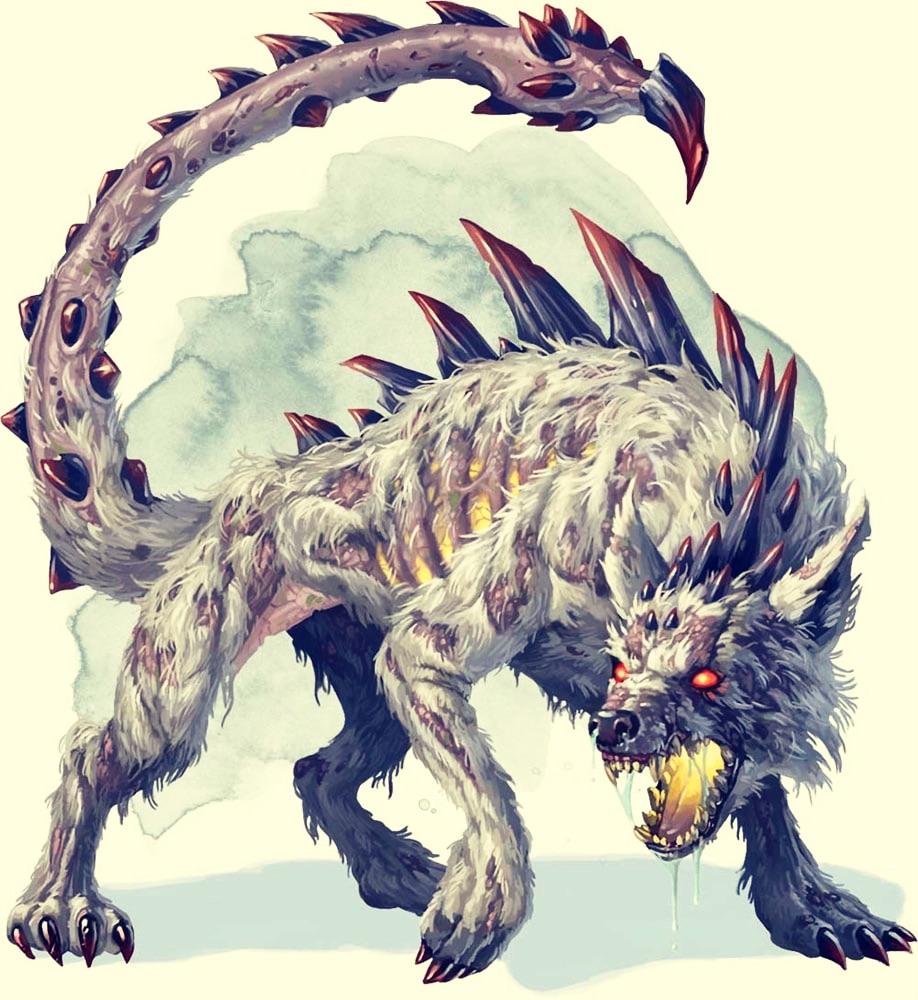
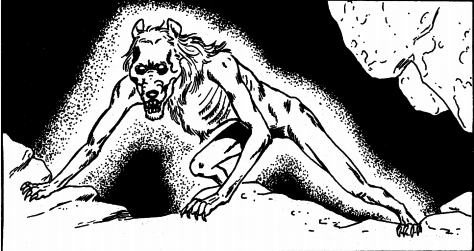
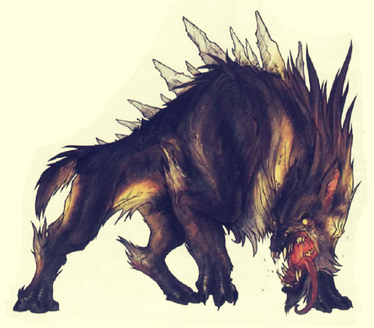
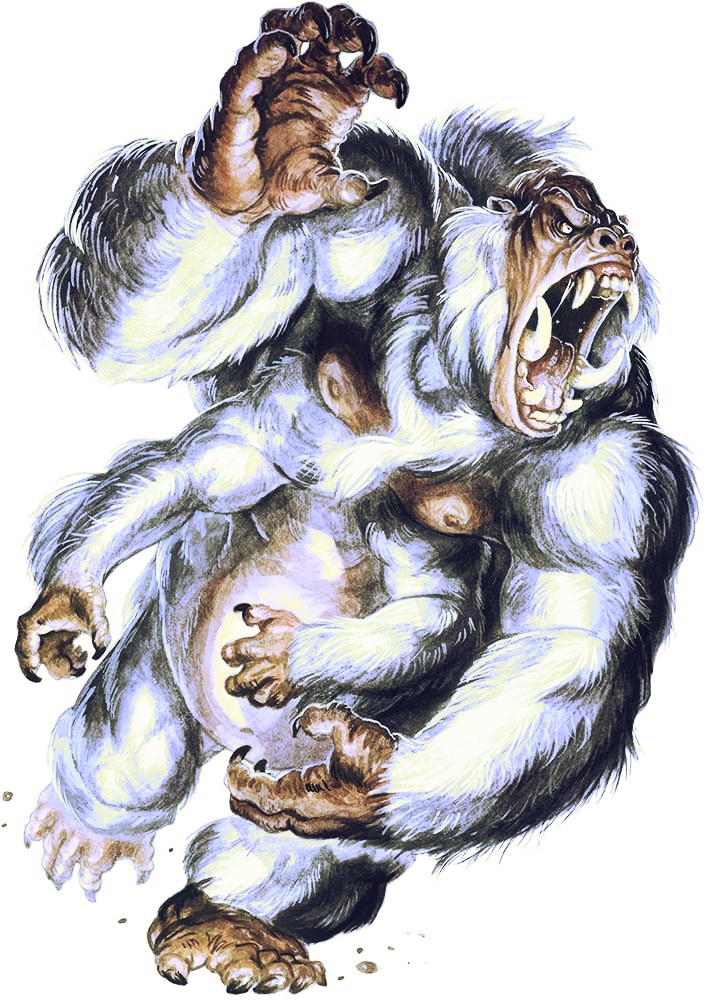
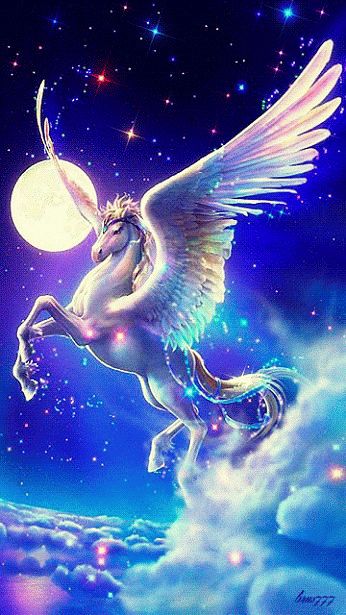
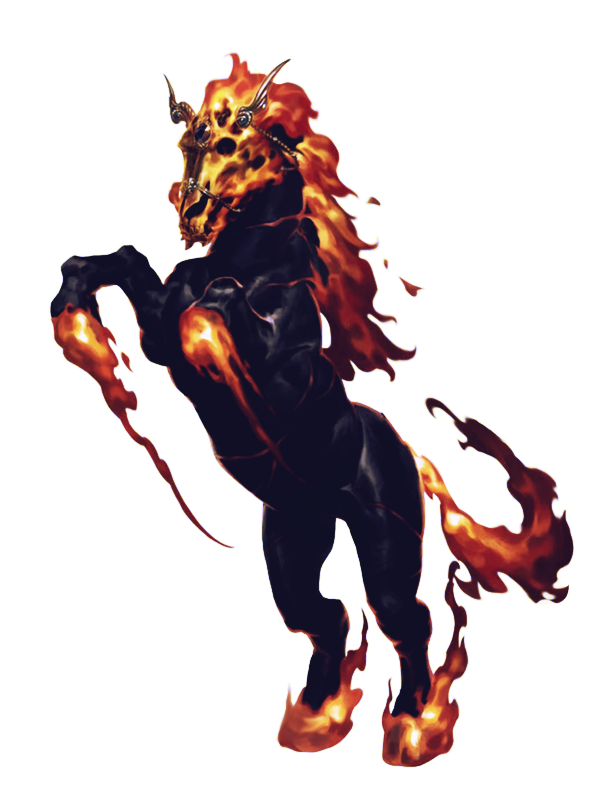
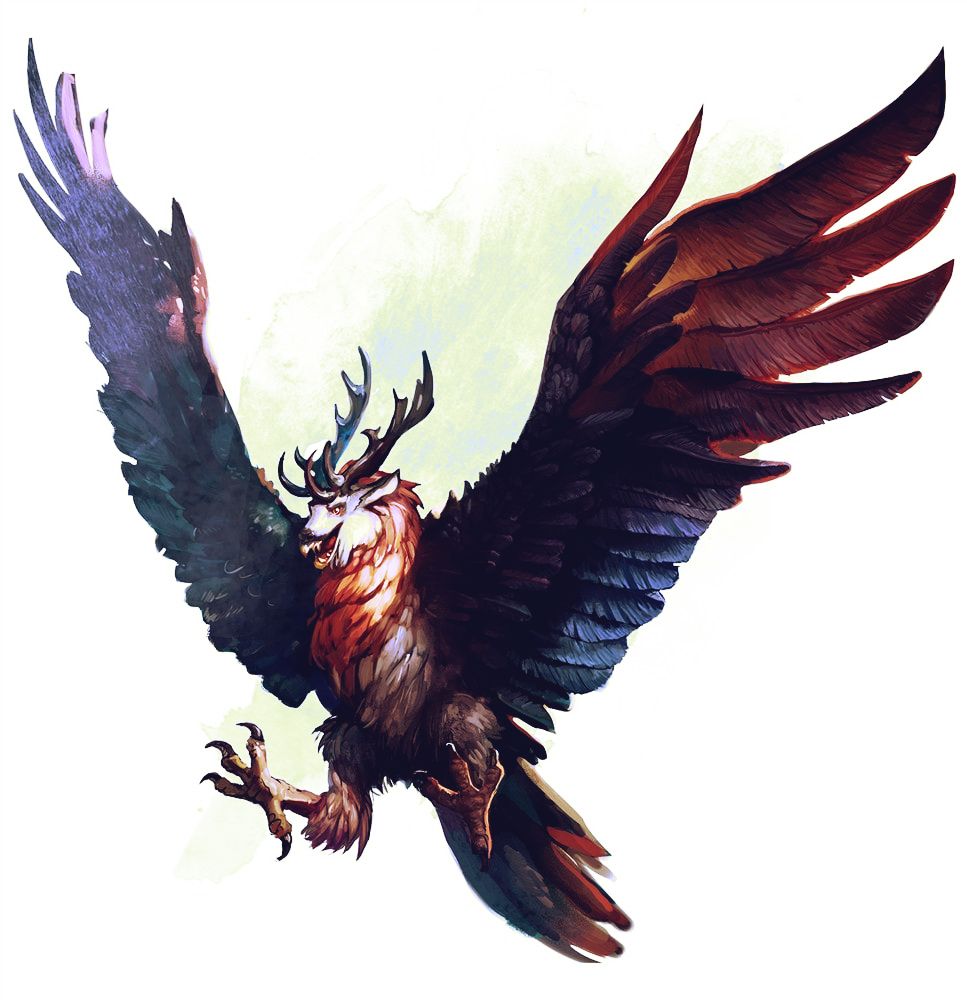
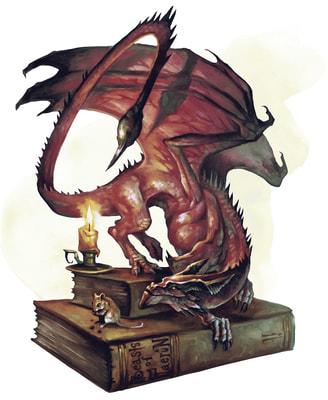
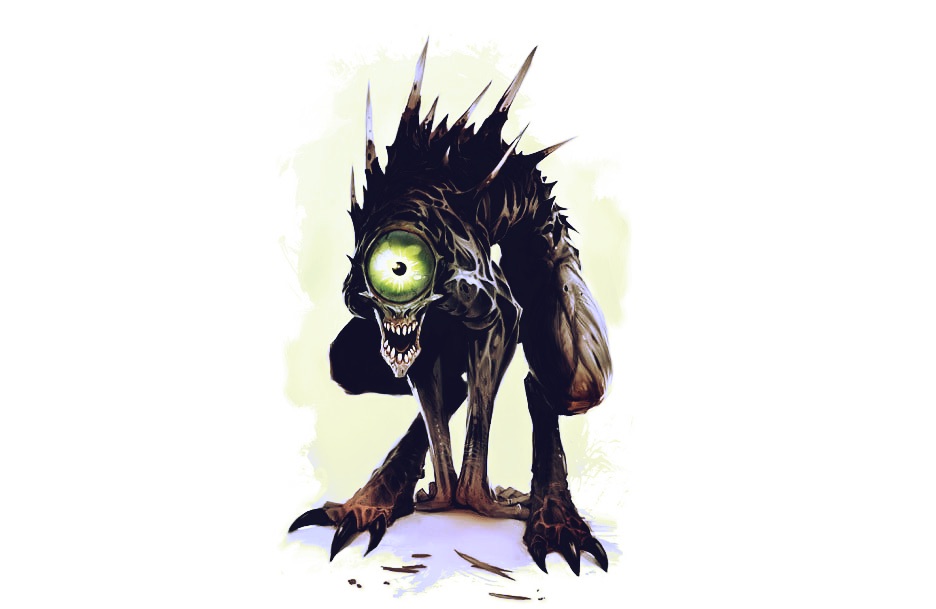
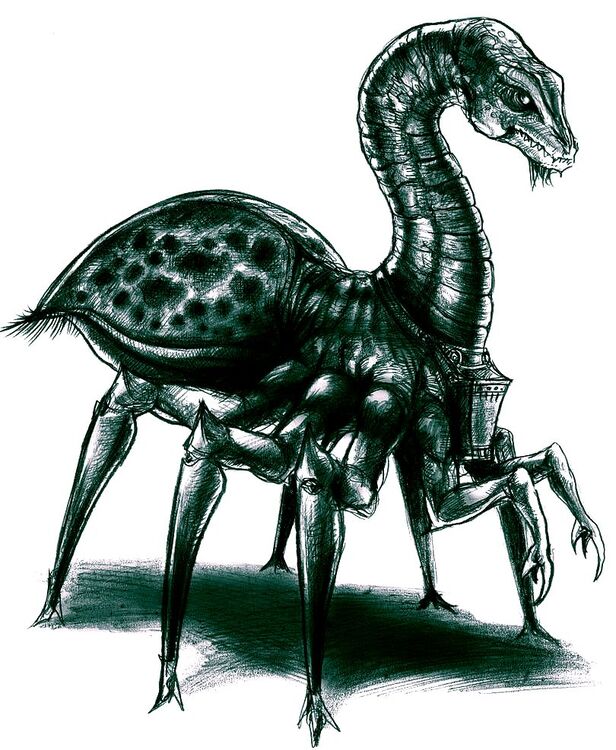
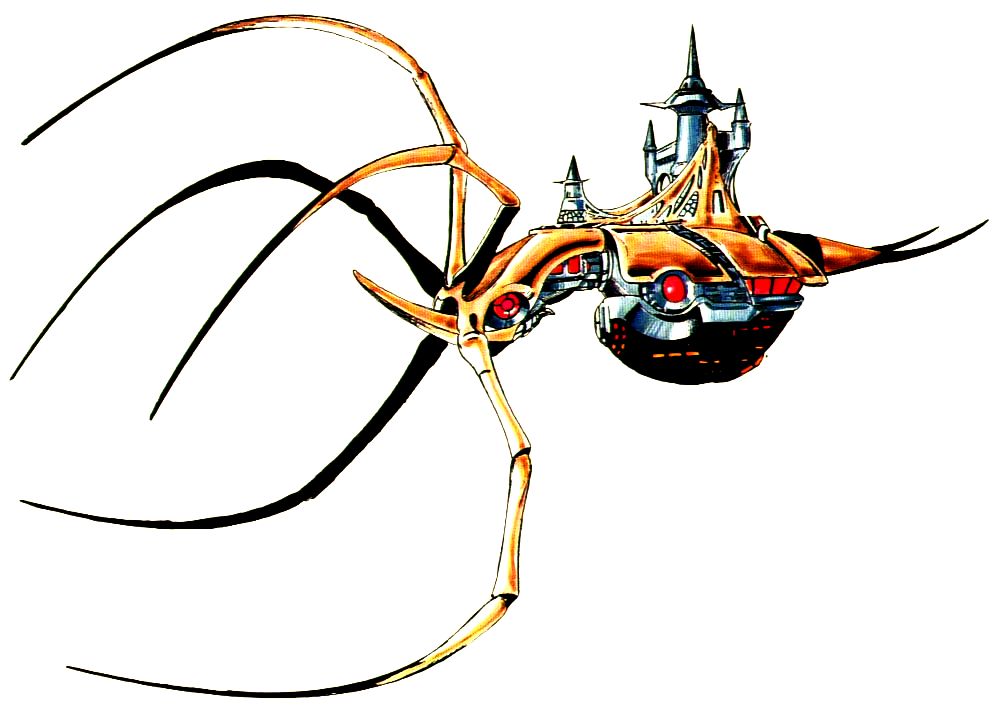
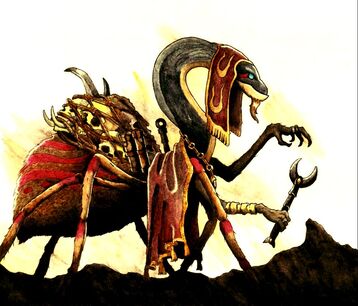
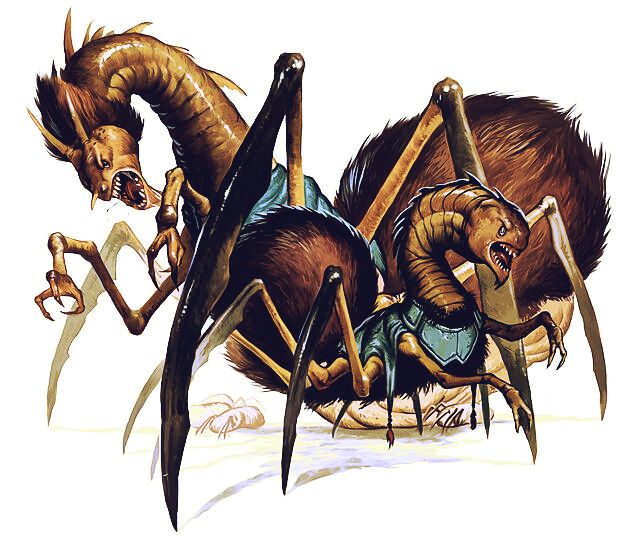
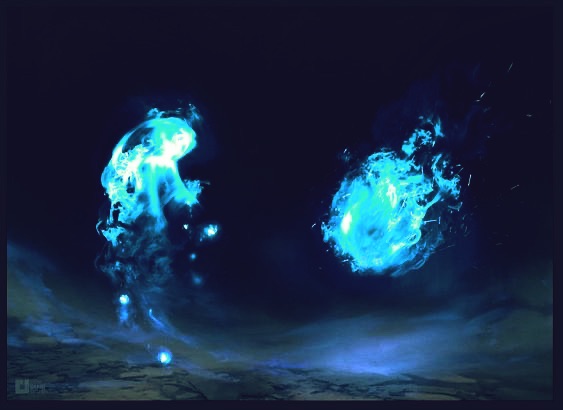
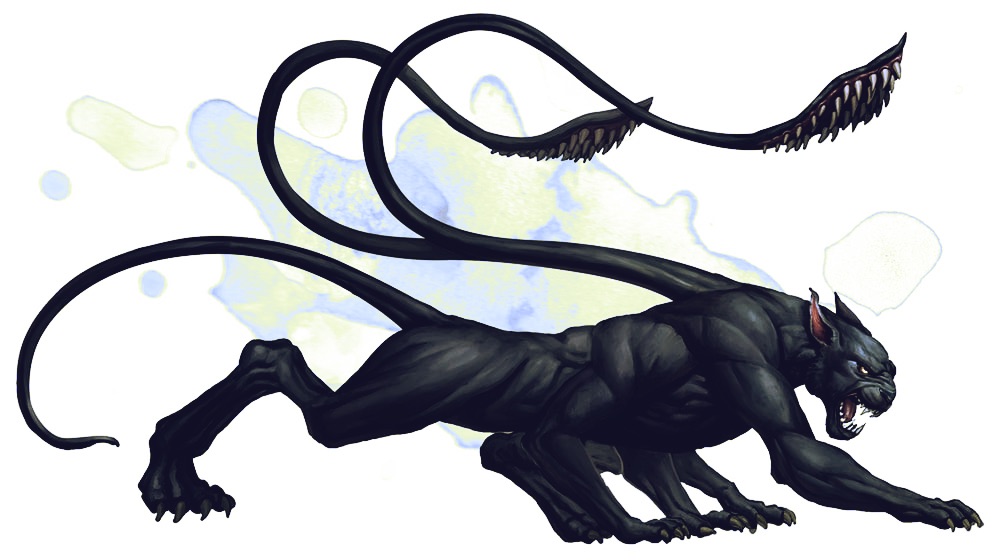
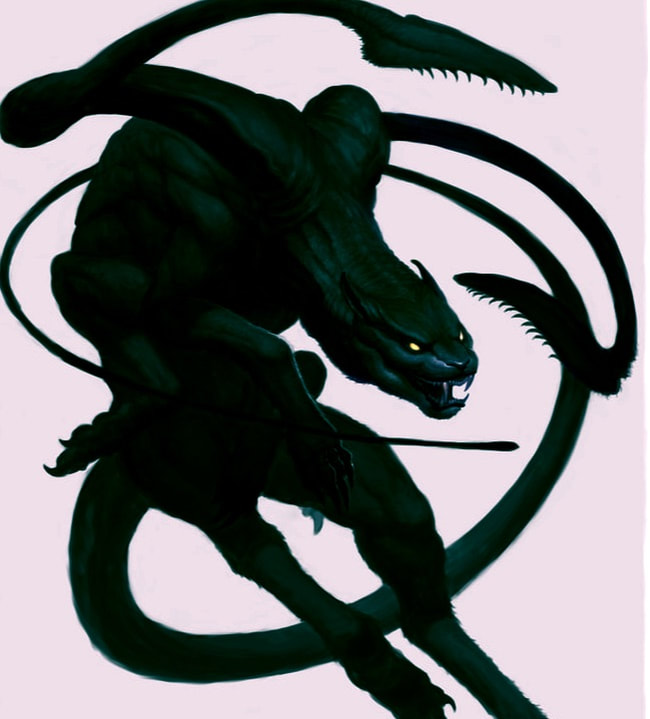


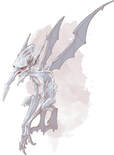
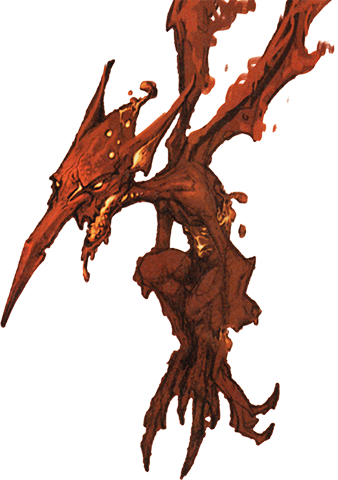

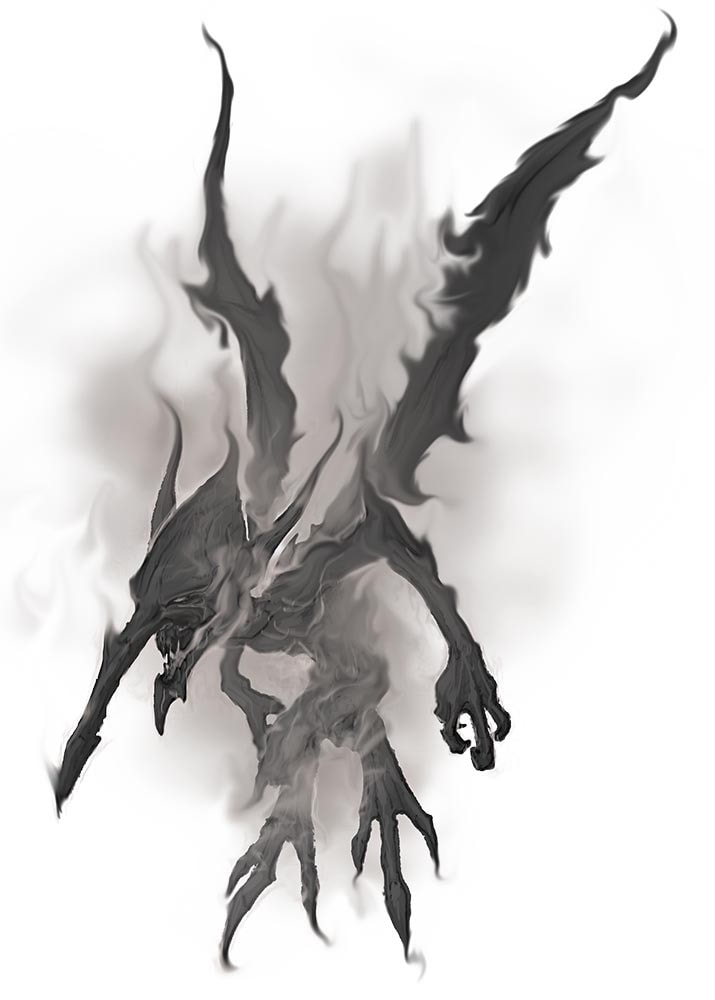
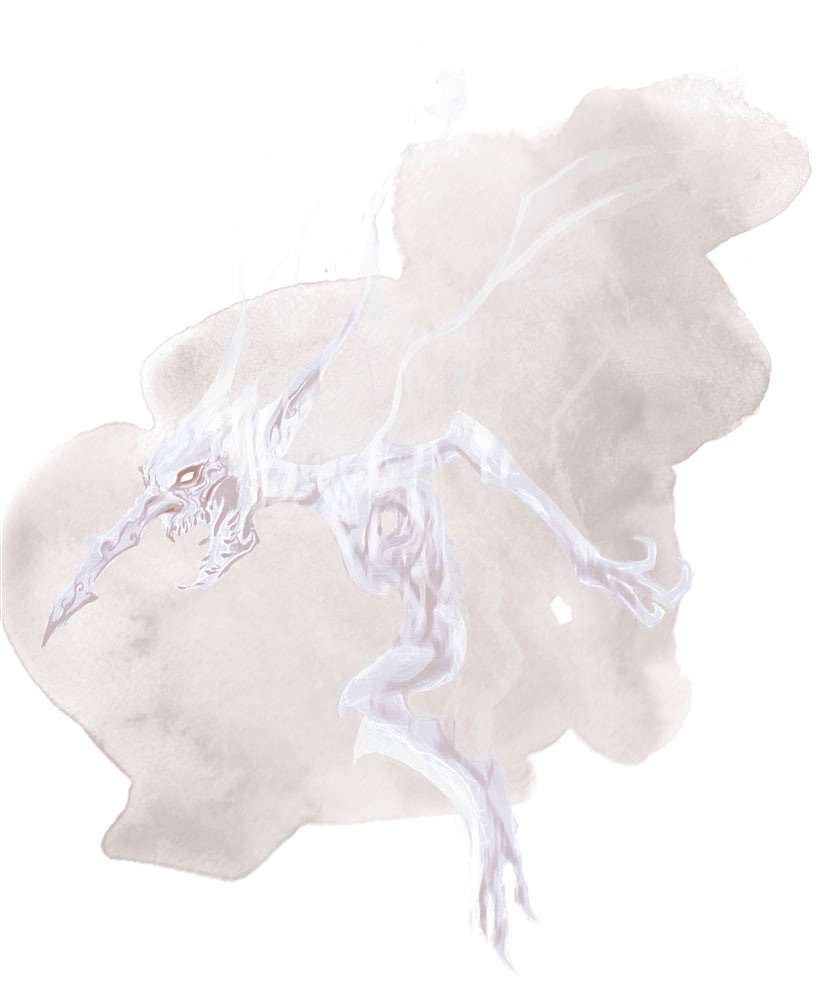
 RSS Feed
RSS Feed